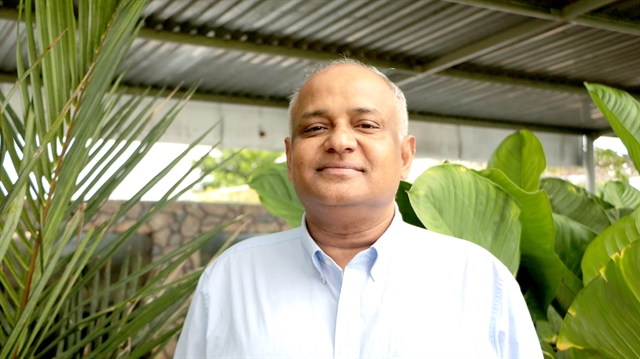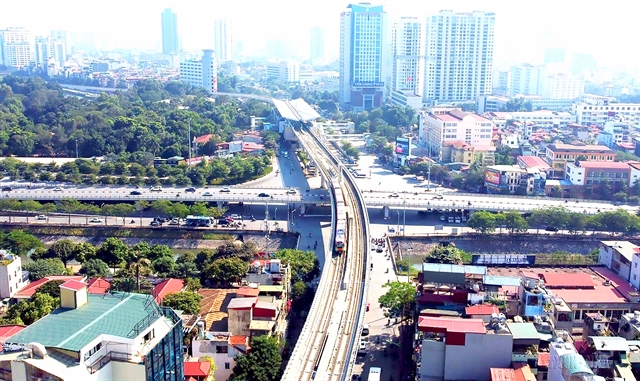 Opinion
Opinion

 |
| Shantanu Chakraborty, country director of the Asian Development Bank (ADB) in Việt Nam. — VNS Photo Nhật Hồng |
Shantanu Chakraborty, country director of the Asian Development Bank (ADB) in Việt Nam, speaks to the press about Việt Nam’s economic prospects next year and the bank’s assistance to Việt Nam in this context.
How are the economic prospects of Việt Nam next year?
I think the prospects remain cautiously optimistic. There are some external headwinds in terms of macroeconomic situations in Việt Nam's main trading partners, a tightening of monetary policy in those countries could impact Việt Nam's exports next year.
But, overall, the economy has shown strong resilience this year despite these headwinds, and the government is taking the right steps to address some of these issues. Inflation has been kept low, interest rates have been kept low, and the growth of Việt Nam in 2023 compares quite well with that of the neighbouring countries.
Việt Nam's economic prospects next year and going forward will depend on how much public investment is made to improve infrastructure, improve the country's resilience, and address challenges such as climate change.
So far, the government has achieved a good balance between monetary and fiscal policies to ensure a high degree of resilience to some of the global challenges that the economy faces that are not under the control of the Vietnamese government.
What are ADB's current areas of focus to help Việt Nam address challenges from external contexts and adapt to climate change?
ADB has become the climate bank of Asia. There has been a significant shift in ADB’s operations throughout the region towards tackling climate change. That's one of the four shifts that ADB has focused on - the climate shift. All our operations will have a strong component of climate and finance, both on the adaptation and mitigation side.
Việt Nam has been a very strong partner of ADB for 30 years, we have lent about US$17 billion so far to Việt Nam, in numerous projects in the last few decades. Going forward, our focus will be ensuring support to projects that are climate resilient, that are in line with our strategic alignment of sustainable development, whether in infrastructure or agriculture, in every aspect of our operations.
The objective will be to ensure climate resilience, sustainability and inclusive growth. ADB's next five-year country partnership strategy essentially has these key pillars: One is green growth, one is inclusive growth, and the third is private sector-led growth. These are the three core strategic areas where ADB aims to support the government of Việt Nam.
In addition to our public sector borrowing window or sovereign window, we also have a fast-growing private sector lending window. We also have transaction advisory services to help the government come up with commercially viable projects that can then be paid out to private sector investors for attracting investments in the country. We have developed upstream policy work with the government to strengthen the policy framework in many of these sectors, and bring them up to the best practice we have seen elsewhere in the region.
These are the various areas: sovereign lending, non-sovereign lending or private sector lending, and transaction advisory services to prepare projects so investors would come in and also advise on policy reform areas on the upstream side.
 |
| The Nhổn-Hà Nội Station urban railway has been built with funding from various foreign partners, including the ADB. Infrastructure is seen as one of the key factors in Việt Nam's economic development. — VNA/VNS Photo Huy Hùng |
What are some of the best-case practices from other countries that Việt Nam can learn from?
One key area is PPP - public-private partnership, which is an important pillar to attract private investment.
For instance, if you look at ADB's recent achievements, one case study that comes to mind is Uzbekistan in Central Asia, a very important member of ADB, where we see a significant investment in renewable energy. That is a function of ADB's public sector operations - providing policy support to strengthen the institutional framework of the sector, then there is the midstream support that we provided through transaction advisory where projects were identified.
They were prepared in a contractually robust manner, de-risking the projects through various mitigations so that the private sector could come in and then bid out the projects in a competitive manner, so the cheapest cost solution would come to the country, and lastly financing those projects downstream through the private sector window of ADB, so that the projects had the necessary long-term financing, 15-20 year tenor loans, needed to make such projects commercially viable – so upstream policy support, midstream transition advisory support, and downstream financing support by providing debt.
ADB was involved in all three areas in Uzbekistan. Not only ADB but other multilateral banks are also very active in the country, this holistic involvement in the sector is what led to the proliferation of renewable energy, both solar and wind in the country. That is a case I can think of as a success story, where we looked at the sector in a complex manner and provided solutions all the way through.
I do hope that PPP progresses much faster in Việt Nam, because it is very clear that just public spending is not enough to meet the growing demand for infrastructure in the country, private sector has to come in in a very big way. Việt Nam is seen as a happening place, a place where private investment will be successful, but the building blocks have to be in place first.
How do you assess the current flow of foreign direct investment in Việt Nam?
In the last couple of years Việt Nam has had a very strong demand for foreign direct investment (FDI), and it has emerged as a strong destination for FDI, but there is competition around that.
Other countries in the region have also been very proactive in attracting FDI. To maintain Việt Nam's competitive edge in terms of continuing to attract FDI, a lot more needs to be done in terms of building up infrastructure. The backbone of the economy would have to remain the interest in building roads, building power plants, and strengthening the transit and transmission systems, because all these are what investors look at when putting money in a country.
It is also important from the perspective of tackling climate change, because we now have committed to very ambitious net-zero targets that will require a significant near-term increase in renewable energy generation, which again, needs a lot of investment in the transmission system to be able to absorb the intermittent nature of renewable energy. Those investments will need to be made to stabilise the grid and ensure that that energy is available to consumers, both industrial and domestic.
The second thing is policy reform. There are many sectors where a lot of progress has been made, but much more needs to be done in terms of creating an enabling business environment, creating robust policies, de-risking the sector, reducing uncertainties, and ensuring regulatory certainty and consistency.
These are the key elements that foreign investors will look for when they seek to invest in the country. This country needs FDI, this country will continue to need FDI not only in the manufacturing sector where it is attracting FDI, but also in import infrastructure.
I think these are the key elements that need to be put in place. One, of course, is strengthening the infrastructure and attracting investment. Second is ensuring a very robust policy framework, an enabling business framework, is in place to eliminate uncertainties and risks of investment in the country. — VNS